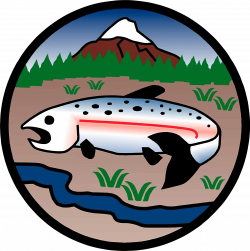The previous article addressed the fur trade and early exploration also, but only the early period of contact, when all interaction was relatively brief and was often limited to trading conducted in canoes and sailing ships on the open ocean. Many changes took place in our villages, within a very short period, leading up to the time that land based populations of foreigners took the next steps of colonization. The mass epidemics transmitted by the earlier contacts dramatically reduced populations – and thereby the people’s ability to protect our own interests when push came to shove.
The way in which occupation of our lands was accomplished was gradual, and the slow infiltration was probably not recognized in most areas until it was difficult to resist. Also probably not understood were the complex, artificial European laws and customs supporting the concepts of “discovery rights,” “right by conquest,” “manifest destiny,” etc. that would come into play – and the force with which Christian conversion would be expected of all the native survivors of colonization.
In 1805, Lewis and Clark and their party made their way down the Columbia River to its mouth. They were the first to make the overland trip from the middle of the continent to our shores. The reports that they made upon their return led to land based fur trading posts & (later) Christian missions being established in our country.
The Fur Trade Era is often described as a friendly period of “free trade.” That may have been true in some cases, especially in the earliest phases. But, as soon the trappers got to know the lay of the land & how to get from one place to another, they began engaging us in economic warfare by running their own trap lines in our country, instead of depending upon our people selling them furs. These were some of the early signs of things to expect of the foreigners – taking without permission or apology.
In the early trade on the coast, the Spanish & Russians (as well as the British, Americans & others) had been involved to some degree, but by the mid 1820’s, the only two remaining fur trade competitors were the Hudson Bay Co (British) and the Pacific Fur Co. (USA). Fort Astoria (P.F. Co.) & Fort Vancouver (H.B. Co.) had been built as signs of the political posturing that was the reality of the day. There were also many smaller outposts & trap lines that were manned by employees of the fur companies.
While the US Constitution recognized our native people’s right to our homelands (Aboriginal Title), the United States also participated in constitutionally contradictory political practices & subscribed to the same European concepts that permitted colonization of foreign lands & peoples and empire building by European nations.
In 1832 there was an attack ordered on the Yaquinas by John McLaughlin, Chief Factor at the Hudson Bay Co. post at Ft. Vancouver. This attack was brought on because two HBC trappers were running a trap line in the Yaquina/Alsea territory without permission of our local people. The trappers paid for their disrespect with their lives. When news of their deaths reached Ft. Vancouver, John McLaughlin ordered some HBC employees to teach the natives of the north central coast a lesson. He wasn’t sure who was even responsible, but thought that a reprisal anywhere in the neighborhood, issued with sufficient force, would deliver the desired message.
This attack on a village at Yaquina Bay in 1832 (well documented in both HBC records and our tribal oral histories) was brutal enough that it (combined with the epidemics) was given as a reason that so few Yaquina people survived into the reservation period. Some of the fur trappers & traders took Indian wives, such as Jean Baptiste Garnier on the Umpqua River, and many of the fur company employees who stayed on in the Willamette Valley. This eased some of the relationships in local areas, but strangers stomping through our lands with little respect or humility were not welcomed.
As the fur trade era faded, many of the trappers turned farmer, & by the late 1830’s there were various missionary settlements revolving around the main Methodist Mission at what is now Willamette University (Salem). A mission school for our children of the valley was one of the first non-Indian structures in that part of the valley. The relationships between our tribal people & the settlers changed slightly or radically depending on the rate of population influx, and the main activity of the new population, as the focus switched in different areas from fur trade to permanent settlement activities.
It doesn’t appear that our ancestors resisted settlement to the point that they thought that all foreigners needed to be kept out, but instead tried to accommodate settlers who were respectful. However, each year our people grew weaker in number as the strangers grew stronger in number and presence. The signing of a treaty between Great Britain and the United States in 1846, and the subsequent establishment Oregon Territory, & a provisional government as a part of the United States would change the form and direction that all future encroachment on our homelands would take. Our people’s interaction with the citizens of the new Oregon Territory and United States will be the subject of the next article.
